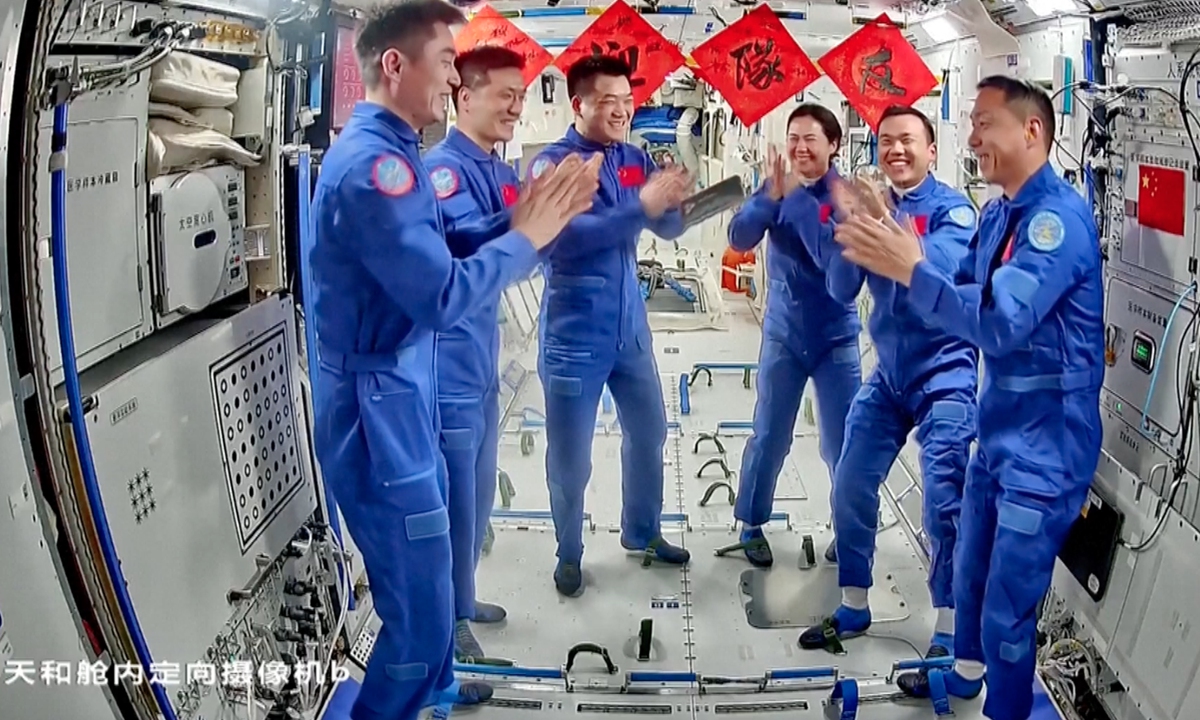
This image captured at Beijing Aerospace Command and Control Center on October 30, 2024, shows a group photo of the crews of Shenzhou-18 and Shenzhou-19 manned spacecrafts. Photo: China Manned Space Agency
The three taikonauts on China's Shenzhou-19 spaceflight mission entered the Tiangong Space Station and met with the other taikonaut trio stationed there on Wednesday, starting a new in-orbit crew handover. The successful reunion triggered jubilation on Chinese social media platforms as it not only indicated the seamless execution of a complex space operation, but also showcased China's growing strength and achievements in the space industry.
The Shenzhou-18 crew opened the hatch at 12:51 pm on Wednesday and greeted the new arrivals, according to the China Manned Space Agency (CMSA).
The six crew members then took group pictures to document the fifth space reunion in China's aerospace history. The first such picture was taken in November 2022, when the taikonauts from the Shenzhou-14 and Shenzhou-15 missions cametogether for a historic space gathering in the Tianhe core module.
They current crews will live and work together for about five days to complete planned tasks and handover work, the CMSA said.
The Shenzhou-19 mission grabbed public attention with several significant highlights. For example, it is the youngest-ever crew, comprising mission commander Cai Xuzhe and new taikonauts Song Lingdong and Wang Haoze, both of whom were born in 1990. Wang is currently the only female space flight engineer in China.
The scheduled experiments during the mission also include an unprecedented exposure experiment involving bricks made from simulated lunar soil – a potential building material for future habitats on the moon. The mission carries great importance for the country's development of future manned lunar projects.
It also marked the first time that all three transport vehicles that took the taikonauts were China's selfdeveloped Hongqi, or Red Flag, automobiles. The vehicles' license plates displayed the Chinese characters "wanwu yishi, yuanman chenggong," which translates to "absolutely reliable, complete success," conveying heartfelt wishes for the taikonauts' safe journey.
At a press conference on Tuesday about the launch of the Shenzhen-19, Lin Xiqiang, a CMSA spokesperson, emphasized that China's manned space program has always prioritized quality and safety.
Lin said China ensures that no problems are brought to space and continuously optimizes emergency response plans to mitigate threats to its taikonauts, such as space station leakage caused by impacts from space debris.
Since the space station's initial operation phase, the time available for taikonauts to respond to emergencies has increased fivefold, Lin said.
The Shenzhou-20 manned spacecraft and a Long March-2F rocket are now on standby at the final assembly plant in the Jiuquan Satellite Launch Center, according to Lin.
He added that they can swiftly convert to a launch state to carry out emergency rescue missions for taikonauts on the space station.
Pang Zhihao, a Chinese senior aerospace expert, told the Global Times that the emergency plans are less likely to be used unless problems occur such as the recent situation with NASA or if a taikonaut comes down with a sudden illness.
Two NASA astronauts were left behind on the International Space Station after Boeing's troubled capsule returned to Earth in September. Their original itinerary was eight days, but they are now waiting for a ride back with SpaceX in late February 2025.
"We appreciate NASA's high regard for the safety of its astronauts, and at the same time, we extend our best wishes for the safe return of the two astronauts,"Lin noted at the Tuesday press conference.
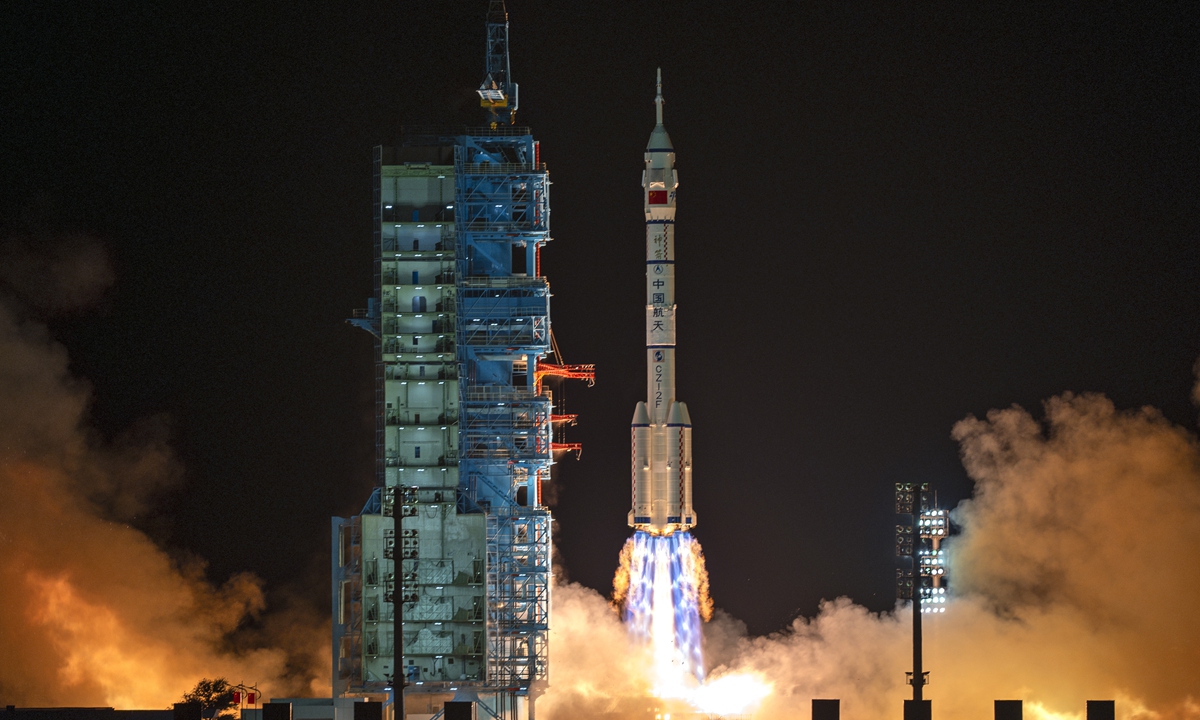
The Shenzhou-19 crewed spacecraft, atop a Long March-2F carrier rocket, is launched from the Jiuquan Satellite Launch Center in Northwest China on October 30, 2024. Photo: VCG
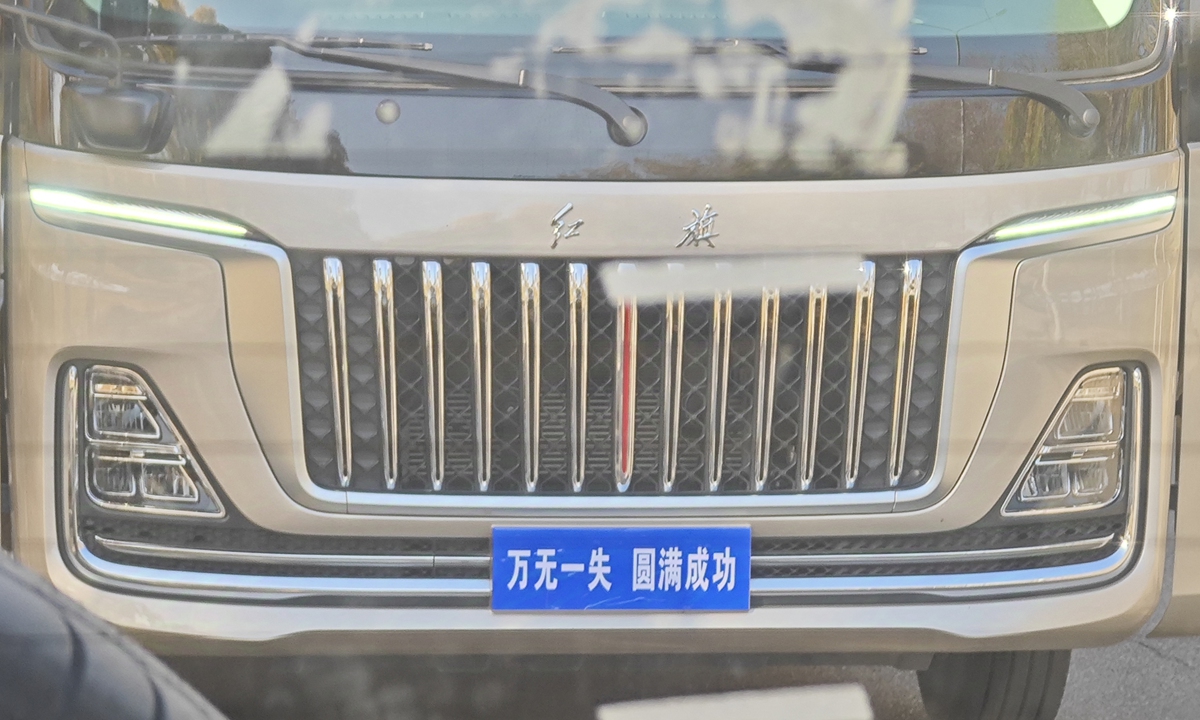
A Hongqi car with a license plate displaying the Chinese characters “wanwu yishi, yuanman chenggong” Photo: VCG
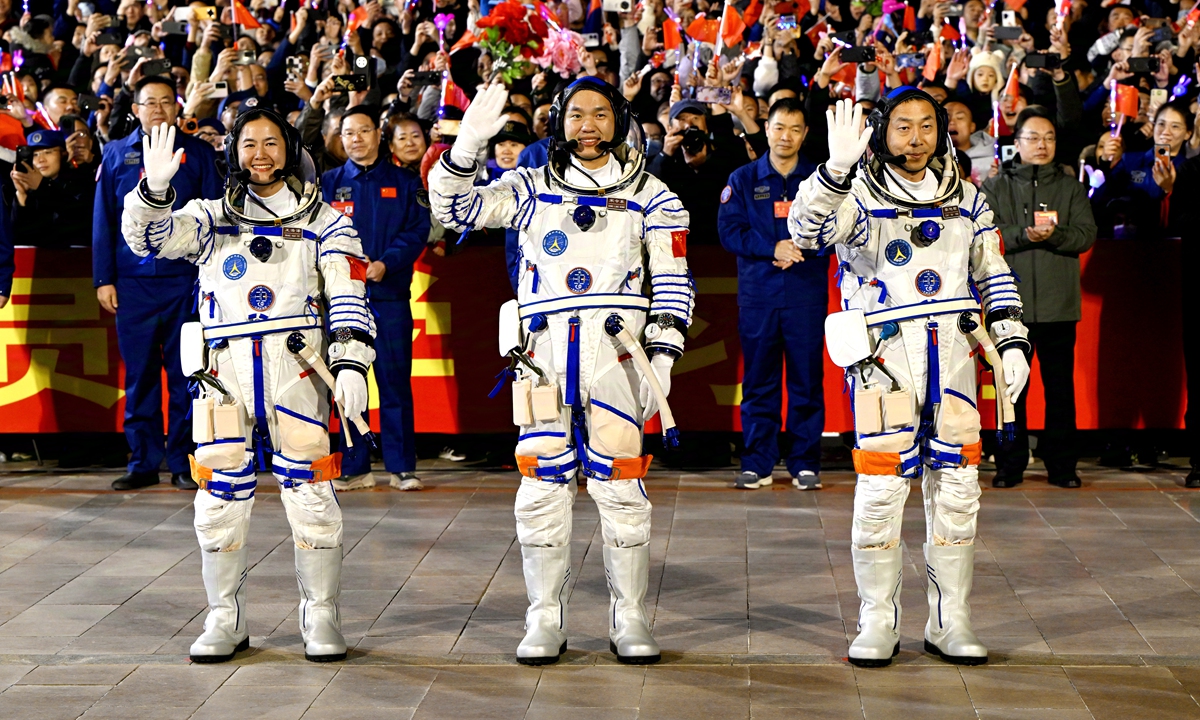
The Shenzhou-19 manned spacecraft crew Wang Haoze, Song Lingdong and Cai Xuzhe (from left to right) wave hands to the public at the see-off ceremony at the Jiuquan Satellite Launch Center on October 30, 2024. Photo: VCG
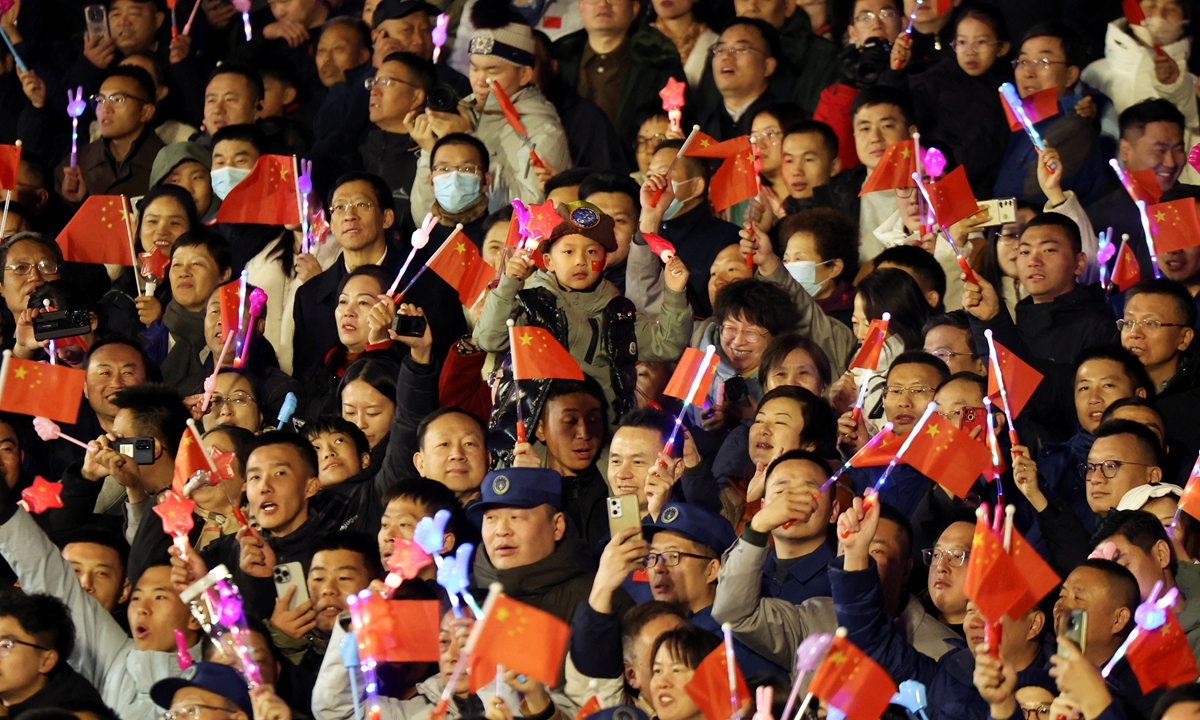
People wave Chinese national flags at the see-off ceremony at the Jiuquan Satellite Launch Center on October 30, 2024. Photo: IC
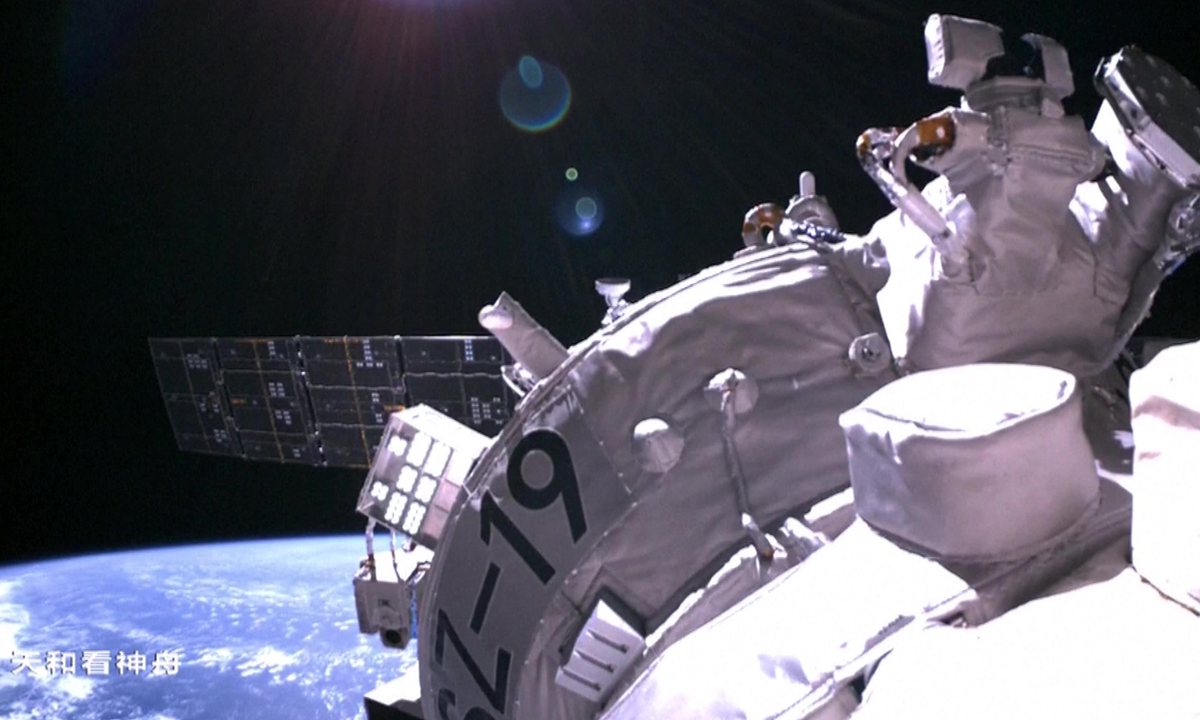
This image captured at Beijing Aerospace Control Center on October 30, 2024 shows the Shenzhou-19 manned spaceship docking with the front port of the space station’s core module Tianhe. Photo: China Manned Space Agency
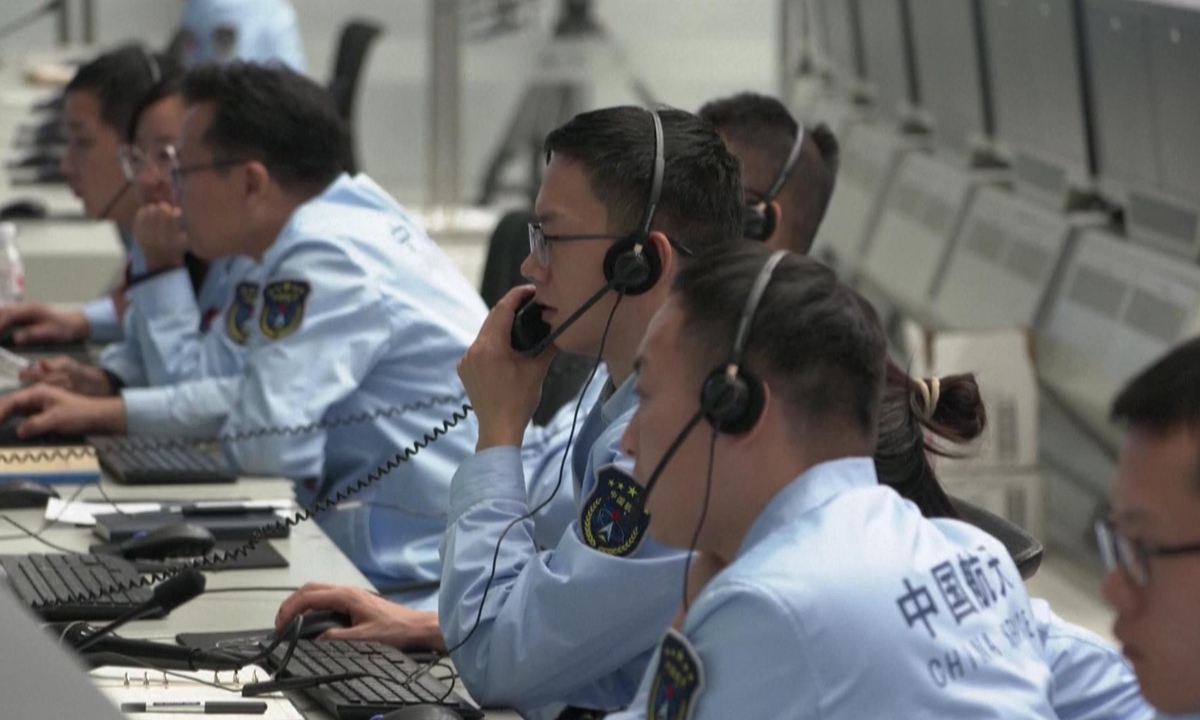
Picture taken on October 28, 2024, shows working staff are making preparedness for the launch of Shenzhou-19 manned spacecraft. Photo: VCG
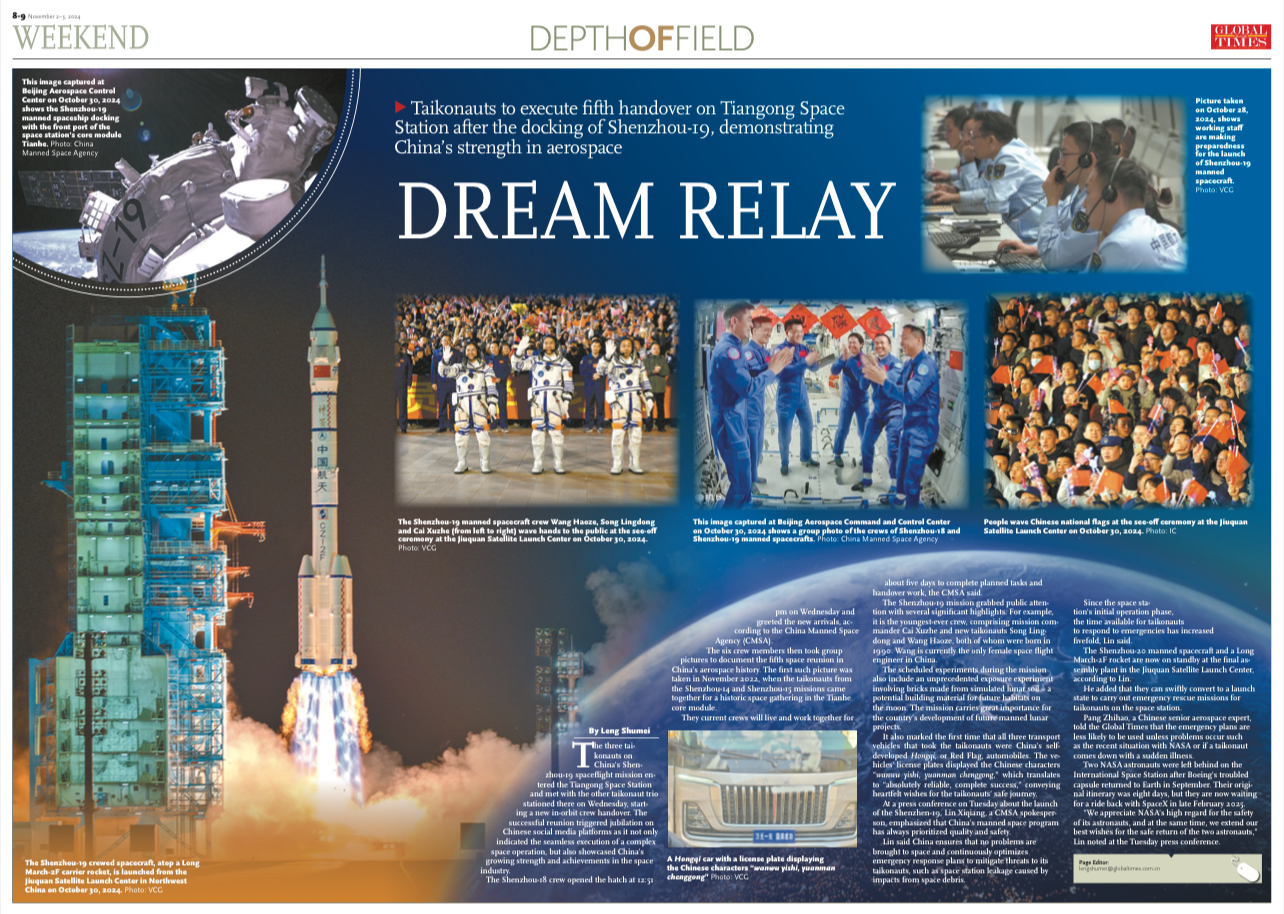
Dream relay











